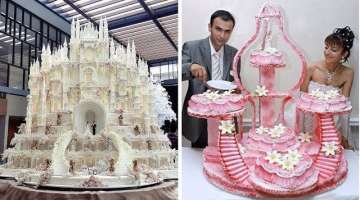An Ancient Chinese Ginkgo Tree Drops an Ocean of Golden Leaves
This towering ginkgo tree is located within the walls of the Gu Guanyin Buddhist Temple in the Zhongnan Mountains in China. Every autumn the green leaves on the 1,400-year-old tree turn bright yellow and fall into a golden heap on the temple grounds drawing tourists from the surrounding area. You can see more photos here and here.
- 1 | 5

Thousands of tourists travel to see the "tree of longevity" in all its golden glory each year.Ginkgo biloba is the oldest living tree species in the world. It's been around about 270 million years, surviving multiple mass extinction crises, including the one that wiped out the dinosaurs.
- 2 | 5

The world's oldest specimens grow outside temples and monasteries in China, including this 1400-year-old giant located within the walls of the Gu Guanyin Buddhist Temple in the Zhongnan Mountains
- 3 | 5

The temple was built in Tang dynasty in the year 628, and legend has it that the ginkgo tree was planted by Emperor Taizong himself.It attracts thousands of visitors each autumn, when it covers the whole courtyard in breathtakingly beautiful blanket of golden leaves.
- 4 | 5

The trees were almost wiped out in the last ice age, but Tibetan monks began cultivating them and planting them in the Himalayas about 4000 years ago. It is thanks to their efforts that the "tree of longevity" still exists today.Also known in Daoism and Buddhism as the "tree of enlightenment," ginkgos are revered throughout Asia for their medicinal purposes and spiritual significance.
- 5 | 5

Ginkgo leaf extract has been the subject of over 400 published studies, mostly because of its ability to improve circulation. It's best known for its use in the treatment of Alzheimer's, dementia and memory loss.



















